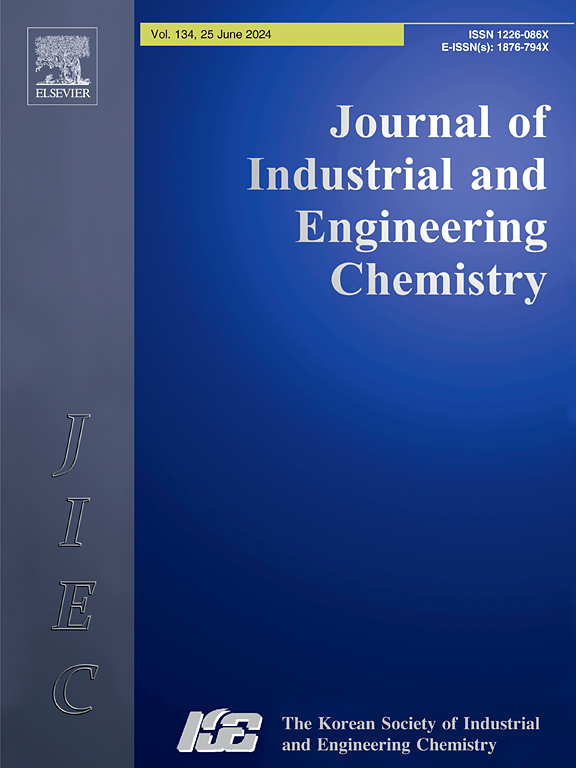Development of nano-hydroxyapatite composite photo-crosslinked bone decellularized matrix based microsphere for large bone defect regeneration
IF 5.9
3区 工程技术
Q1 CHEMISTRY, MULTIDISCIPLINARY
Journal of Industrial and Engineering Chemistry
Pub Date : 2024-11-30
DOI:10.1016/j.jiec.2024.11.047
引用次数: 0
Abstract
Large bone defects in long bones pose a significant clinical challenge due to the lack of suitable grafts. Recently, decellularized bone matrix has drawn attention, since it can be used as a bioactive ingredient to fabricate scaffolds for bone regeneration. However, residual DNA in the decellularized matrix is a potential hindrance that can trigger an immunogenic rejection. We hypothesized that extraction of the extracellular matrix (ECM), with low DNA contents, and its subsequent conversion to a microsphere could be an ideal strategy to exploit the structural and molecular cues that exist within the ECM. In this study, we derived a decellularized bone matrix with negligible DNA contents to prepare microspheres. We further functionalized the microsphere with nano-hydroxyapatite and metformin hydrochloride (MF) to enhance its inherent bioactivity. The fabrication and subsequent physicochemical characterization revealed that the composite microspheres were successfully furnished with suitable physicochemical properties. Biological evaluation of microspheres revealed a positive correlation between bioactive microspheres and osteogenic proliferation and differentiation. In vivo experiments further demonstrated the potential of microspheres to contract the bone with the highly dense and organized bone matrix. Hence, the microsphere could be a potential candidate for repairing large bone defects.

求助全文
约1分钟内获得全文
求助全文
来源期刊
CiteScore
10.40
自引率
6.60%
发文量
639
审稿时长
29 days
期刊介绍:
Journal of Industrial and Engineering Chemistry is published monthly in English by the Korean Society of Industrial and Engineering Chemistry. JIEC brings together multidisciplinary interests in one journal and is to disseminate information on all aspects of research and development in industrial and engineering chemistry. Contributions in the form of research articles, short communications, notes and reviews are considered for publication. The editors welcome original contributions that have not been and are not to be published elsewhere. Instruction to authors and a manuscript submissions form are printed at the end of each issue. Bulk reprints of individual articles can be ordered. This publication is partially supported by Korea Research Foundation and the Korean Federation of Science and Technology Societies.

 求助内容:
求助内容: 应助结果提醒方式:
应助结果提醒方式:


